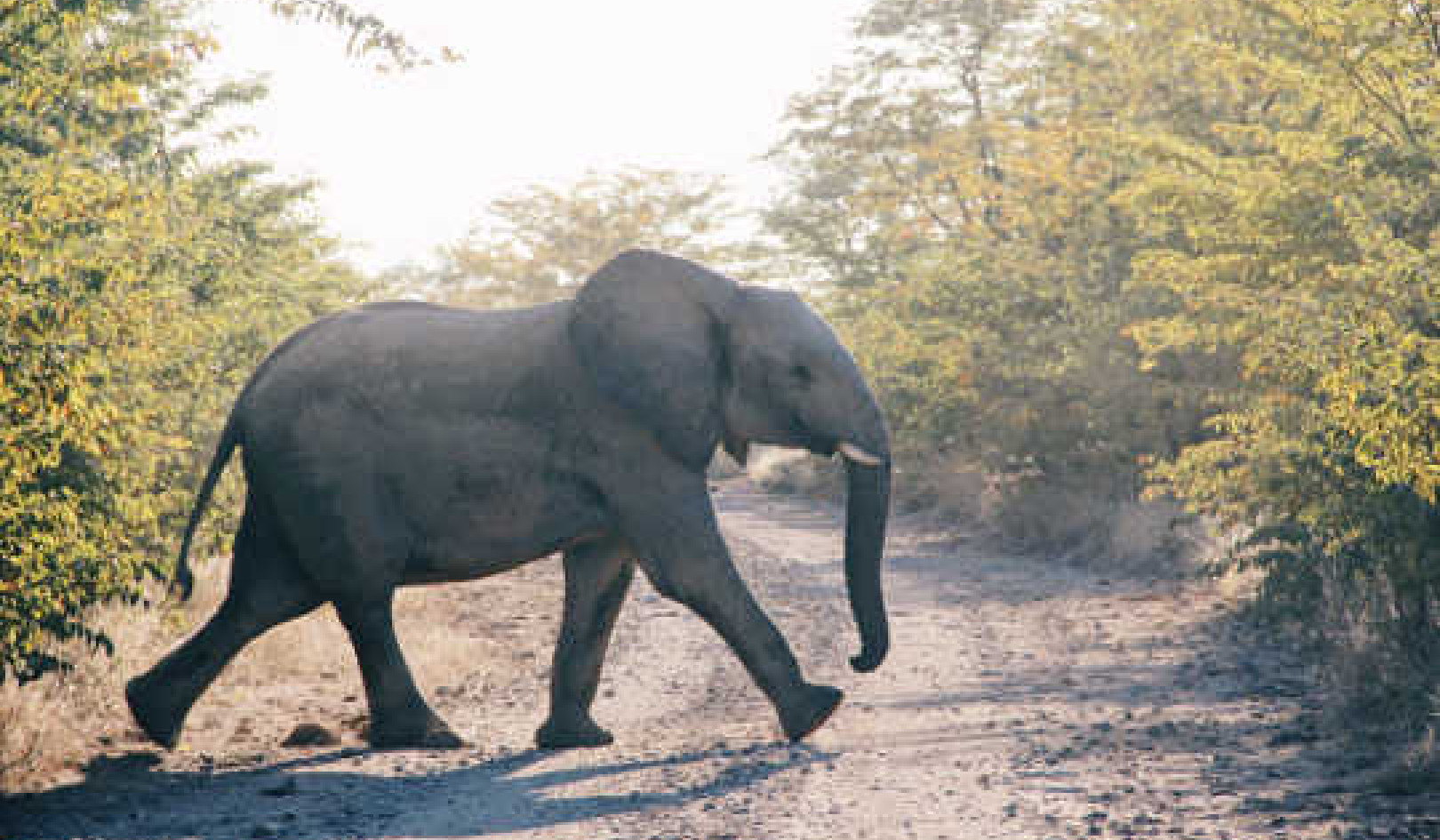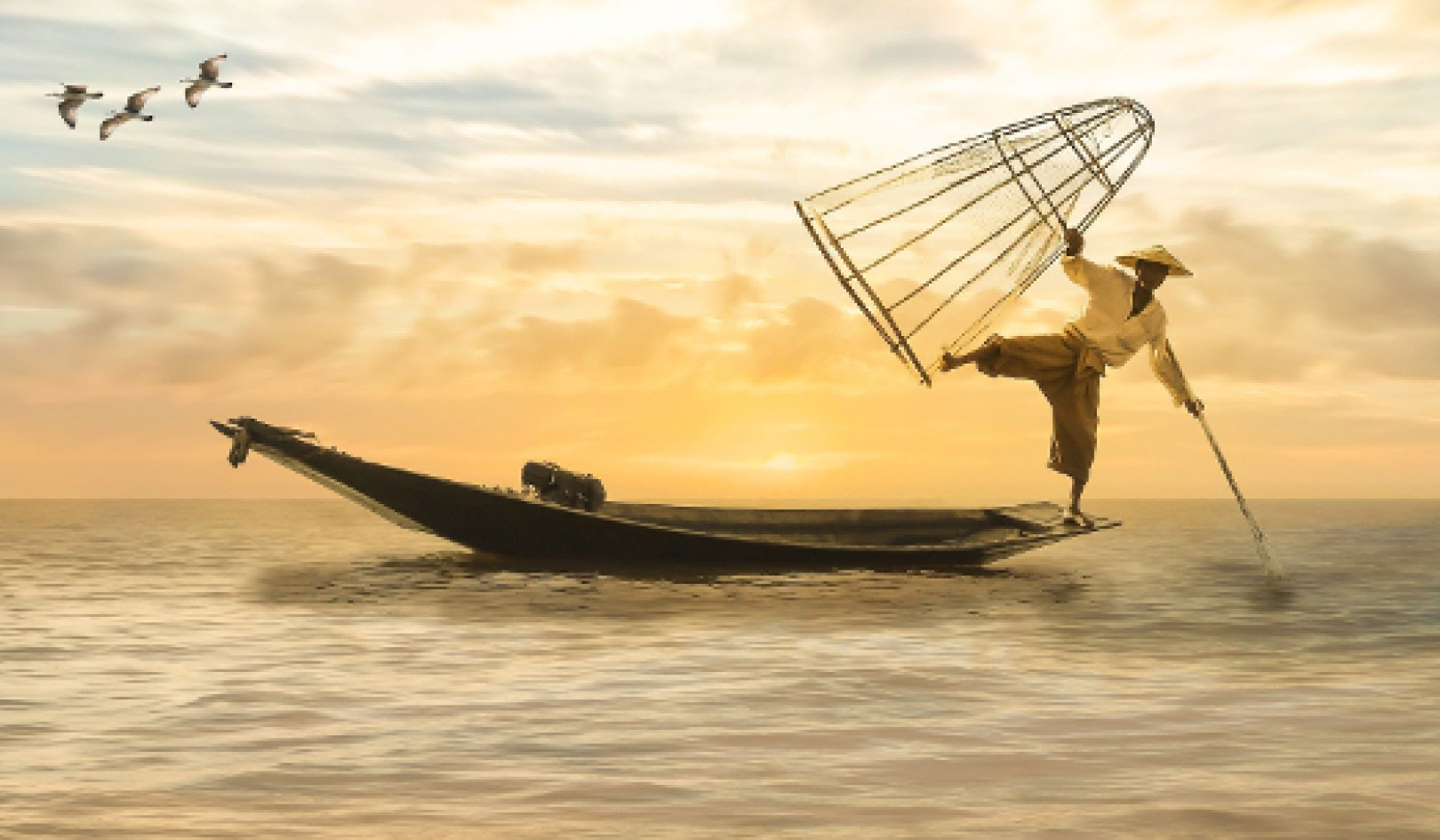
How will the evolution of humanity’s consciousness be reflected in leadership practice? How will the aims of leadership evolve, and what will leadership look like in the new “global” world?
All leadership takes place in the three dimensions of leadership — time, space, and being.* As humanity’s capacities evolve over the coming decades, leaders’ perspectives in all these dimensions will change.
Leadership in Time: Presence in the Now
All leadership involves the journey from a known past and present along a path to a desired future. Changes will take place at all three points — past, present, and future — within this dimension of leadership time.
The “knowing of the present” will deepen as the discoveries of the new science, especially in neurophysiology, neuropsychology, and subatomic physics, become increasingly well-known and understood. These discoveries will illuminate afresh for new generations the ancient truths of the connectedness of all things.
This deepening of connection with the present will coincide with the growing capacity for consciousness in the new generations. This is evident already, not only in the “indigo children,” but also in the changing attitudes of those entering the employment market in recent years.
Younger workers bring with them a greater sense of self-value, a need to understand the purpose and implications of the work they do, a refusal to blindly do things that violate their values, less fear of insecurity, and a greater drive to put self-actualization before material wealth (e.g., lifestyle before money).
The leader’s awareness of the present moment will go beyond the material facts and instinctive needs that have driven commercial society to this point. She will connect with deeper purpose and the higher energy, enabling that to transform self, others, and the situation — so that the greater harmony can emerge. She will act in the knowledge that the moment is the point of the true co-creation of reality, the point at which the potential of all that has been is realized in the flow of the eternal present.
The Nature of the Path
This deeper connection with the present will continue moment to moment—sensing the impact of each action within the constant shift of circumstance, reaction, and response in the closer and further environment. Progress along the path is no longer a process of overcoming “obstacles” in pursuit of a fixed, predefined goal, a process of fighting the competing demands of the external world as we impose our will on it. Progress becomes an exercise in “harmonic sensing” of the surrounding circumstances and forces, from the people to the events to the environment at the highest level of complexity accessible to the individual.
The essence of the journey becomes the achievement of harmony, finding not so much the path of least resistance, but a constant move along the path of greatest benefit, indicated by the degree of harmonic resonance with all that is connected with each action in each moment. Of course, this has implications for how the goal is defined.
Desired Futures
The desired future is that which, at any moment, is perceived to provide the greatest benefit for the population in question in greatest harmony with maximum benefit for the whole.* Time future as well as time past is contained in time present.
The deeper the connection with time present, the greater the awareness of the dynamics of the forces at play, the greater the understanding of the effects of an action within that dynamic matrix. This means that the leader develops an increasing prescience, which enables her to maintain perception of the evolving goal within the shift of flowing events. It is the purpose of the greater harmony and good, not the achievement of a specific goal, that drives her.
The courage of the future leader will be based not on the ability to face and overcome obstacles, but on the ability to live what you believe to be true, knowing that the living of it will change that truth through experience and knowledge.
One example of this may be the work undertaken by Nelson Mandela immediately after his 1994 election in South Africa to ensure that the whole country, including the African National Congress (ANC), supported the national Springbok rugby team—the despised, ultimate symbol of white supremacy—at the 1995 Rugby World Cup just two years after the fall of apartheid (the focus of Invictus, the 2009 biopic directed by Clint Eastwood).
Self-Leadership
To lead others into the future, you must first lead yourself. If you cannot lead yourself, you cannot lead anything—you can react to events, but you cannot shape them; therefore, you cannot lead. As an effective self-leader you are able to “keep your head when all about you are losing theirs and blaming it on you.” [Rudyard Kipling, "If"]
Self-leadership requires the ability to lead in all four of the human faculties—physical, mental, emotional, and ?spiritual.
Physical Leadership is the ability to manage your physical state, to be able to move from a state of potential stress or fear to a state of dynamic relaxation, or flow, for optimal performance.
Mental Leadership is the ability to remain clear-sighted and rational without losing the ability to connect at the human level for the benefit of the greater good.
Emotional Leadership is the ability to acknowledge your emotional reactions, understand their purpose, and integrate them into emotionally intelligent, adult-to-adult interactions in all circumstances, rooted in the present, without regret for the past or fear for the future.
Spiritual Leadership is knowing the purpose of your actions, and how this purpose fulfills your personal sense of meaning and that of others your actions affect, from family to team to world.
Rooted in their connected present, these abilities will be the accepted core of the leaders of the future.
Leading Others
Based on their self-leadership in the four faculties, the leaders of the future will be adept in emotional intelligence, the ability to maintain “I’m okay, you’re okay,” adult-to-adult interactions; the social psychology of leadership; and the authenticity of knowing and living their values with compassion and integrity.
What distinguishes them from many of the leaders of the past will be their purpose—the end that these abilities serve. The deep connection of the future leader intrinsically focuses him on the harmonic realization of the common good, rooted in his perception of the whole. Until now, this has not been the case.
In the past, the role of the CEO and senior management team was to ensure continued profit and shareholder value at the expense of the competition, regardless of the long-term consequences. This is now changing as the new consciousness is manifesting in the broader social sphere.
In the commercial sphere, for example, no public company can now survive without a corporate social responsibility (CSR) program. For some companies, CSR is an integral part of their corporate purpose and identity. For others, it is a small inconvenience to which they pay lip service with a minimal payment or recycling policy. Either way, in our current world all CSR activity takes place within the overall ethos of competitive consumption and growth, with all its attendant fear and aggression.
As leadership consciousness develops, the we, for the good of which the leader works, expands to include the broader current community, the world, and, eventually, the perceivable universe. Serving the larger world becomes intrinsic to the act of leadership at any level.
Leading in the World
We now have the Internet and the growing awareness of the global consciousness the Internet’s existence signals. The ability to remain restricted in one’s reality and interests requires a conscious act of perceptual restriction for more and more of the world’s population.
Strict socially and morally dogmatic systems are being exposed to alternatives, with predictable defensive, fear-based reactions. Limited belief systems and social codes are crumbling under the impact of unavoidable relativity.
The space opened up by the falling of these walls is terrifying for some, a gift for others. The interconnectedness of all things is increasingly demonstrated in science, spirituality, philosophy, and the events of the physical world. As this is understood by more and more of the population within the growing awareness of the redundancy of a growth economy within a finite environment, the predominant mentality will shift from one of scarcity in abundance to sufficiency within limited physical resources. This, in turn, will reduce competitive fear and aggression, allowing the shift to harmonious, connected leadership to accelerate the evolutionary shift at the global level.
“Leading the world” will then be an intrinsic part of every act of leadership at any other level as the effects of actions at the individual and group levels on the wider context will be perceived and considered. Serving self and serving the greater good in the world become one.
Leaders do things, and enable others to do things. Most importantly, leaders do and enable other people to do things that have never been done before in circumstances that have never previously existed. In other words, leaders act, and ACT stands for Awareness, Connection, and Transformation.
The leader is aware of and connected to himself, to those whom he leads, and with the situation he and they find themselves in. The quality of his awareness and connection determines the level of transformation that can occur—through and for the mutual benefit of all involved. Improving the quality of awareness and connection itself transforms the relationships involved. This also means that the impact of the intentional transformation of the leader is both greater than and more harmonious with the wider sphere.
As human consciousness evolves, the quality of leaders’ vision will be measured in the future not by the degree to which it “wins” for themselves and their organization, but by the degree and breadth of harmony within the wider sphere—the degree to which it “wins” for the integrated matrix of perceived existence.*
Polly Higgins, the environmental lawyer, has pointed out that the legal basis for this change of perception exists in the transition from the property law that predominates today to trusteeship law. See www.pollyhiggins.com.
Leaders will ACT increasingly in the moment—becoming more completely aware of all that is in all perceivable dimensions, thereby allowing the higher qualities to transform self, others, and the situation in harmonious relationship.
Leadership Consciousness
Future leaders will understand that we are all unique manifestations of whatever we think we are a manifestation of. Our purpose is to give of that uniqueness to the whole. We can do this by living what we believe to be true, knowing that the living of it will change that truth as we go.
To live what we believe to be true requires the continual recognition and removal of self-oriented, unnecessary, diminishing fears of the body and socially created personality that block growth—that is, the exploration of our truth. This is continual Awareness and Connection leading to continual, evolutionary Transformation.
By removing the fears of the ego/personality as we ACT, we increasingly harmonize ourselves with the whole through the unique entity of our being. As our “note” rings more true, we find our true harmonic and place within the whole. This allows the energy of the absolute/the universe/the whole to work through us. From this emerges the co-creation of our particular point within the universe. This, in concert with others similarly “allowing” the same flow, allows the harmonious universe (known throughout the ages as “God’s Will”) to unfold.
The levels of conscious awareness, connection, and transformation discussed here cannot be learned in a systematic fashion. Our minds and our hearts can respond powerfully to the vision of such a state; our higher selves might resonate with the deep understanding that such an integrated existence is, somehow, our heritage.
The growth of the capability to live from such a level is a process of evolutionary development that, on the larger scale, transcends an individual lifetime, apart from the few essential individuals in each age who are born with the capacity. Its time scale is generational.
The contribution of each individual—each cell within the human organism—is to choose whether to work to be a part of that evolutionary process or not and, if the choice is “yes,” to work diligently to increase their capacity to be an harmonious part of the whole with integrity and without the self-delusion of vain self-aggrandizement. This is, increasingly, the essence of self-leadership.
The Aim Of The Integrated, Connected Leader
The personal aim of the integrated, connected leader is not to be the best, the first, the most valuable: it is not recognition or praise or the leaving of a legacy. It is not to be the most harmonious, the most aware and connected, or the most humble, contributing servant. These are facets of the isolated, self-referencing ego.
The new leader is deeply rooted in her own sense of purpose, which is deeply integrated in the connections with the whole and focused on the greater good. The fears of self-concern are dissolved in the aim of growing the awareness of the role one might play to serve the harmonious development of the whole.
Through experience, and trial and error, the boundaries of the lower ego self will be absorbed in the growing, harmonious presence of the flowing higher self within the greater unity. Our highest aim is to play our true role in this never-ending journey for the benefit of our children’s children and the generations of the universe to come.
* The author would like to acknowledge the role of Nigel Linacre, cofounder of Extraordinary Leadership, in the development of these ideas. [Nigel Linacre and Jefferson Cann, An Introduction to 3-Dimensional Leadership (U.K.: Extraordinary Leadership, 2011).]
Reprinted with permission of Inner Traditions, Inc.
©2013 by Ervin Laszlo and Kingsley L. Dennis.
All Rights Reserved. www.innertraditions.com
Article Source
Dawn of the Akashic Age: New Consciousness, Quantum Resonance, and the Future of the World
by Ervin Laszlo and Kingsley L. Dennis.
 Authors Ervin Laszlo and Kingsley Dennis look at the chief engine of the coming changes--the growing global understanding of nonlocality--and the development of practical applications for it. They examine how the new values and new consciousness taking hold will reorganize society from top-down hierarchies into grassroots networks like those revealed through quantum physics’ understanding of energy and information waves and experienced daily by millions through social media.
Authors Ervin Laszlo and Kingsley Dennis look at the chief engine of the coming changes--the growing global understanding of nonlocality--and the development of practical applications for it. They examine how the new values and new consciousness taking hold will reorganize society from top-down hierarchies into grassroots networks like those revealed through quantum physics’ understanding of energy and information waves and experienced daily by millions through social media.
Click here for more info and/or to order this paperback book or download as an ebook.
About the Authors
 Ervin Laszlo is a Hungarian philosopher of science, systems theorist, integral theorist, and classical pianist. Twice nominated for the Nobel Peace Prize, he has authored more than 75 books, which have been translated into nineteen languages, and has published in excess of four hundred articles and research papers, including six volumes of piano recordings. He is the recipient of the highest degree in philosophy and human sciences from the Sorbonne, the University of Paris, as well as of the coveted Artist Diploma of the Franz Liszt Academy of Budapest. Additional prizes and awards include four honorary doctorates. Visit his website at http://ervinlaszlo.com.
Ervin Laszlo is a Hungarian philosopher of science, systems theorist, integral theorist, and classical pianist. Twice nominated for the Nobel Peace Prize, he has authored more than 75 books, which have been translated into nineteen languages, and has published in excess of four hundred articles and research papers, including six volumes of piano recordings. He is the recipient of the highest degree in philosophy and human sciences from the Sorbonne, the University of Paris, as well as of the coveted Artist Diploma of the Franz Liszt Academy of Budapest. Additional prizes and awards include four honorary doctorates. Visit his website at http://ervinlaszlo.com.
Watch a video: Sustainable Transformation: An Interview with Ervin Laszlo
 Kingsley L. Dennis, PhD, is a sociologist, researcher, and writer. He co-authored 'After the Car' (Polity, 2009), which examines post-peak oil societies and mobility. He is also the author of 'The Struggle for Your Mind: Conscious Evolution & The Battle to Control How We Think' (2012). Kingsley is also the co-editor of 'The New Science & Spirituality Reader'(2012). He is now collaborating with the new paradigm Giordano Bruno GlobalShift University, is a co-initiator of the Worldshift Movement and a co-founder of WorldShift International. Kingsley L. Dennis is the author of numerous articles on complexity theory, social technologies, new media communications, and conscious evolution. Visit his blog at: http://betweenbothworlds.blogspot.com/ He can be contacted at his personal website: www.kingsleydennis.com.
Kingsley L. Dennis, PhD, is a sociologist, researcher, and writer. He co-authored 'After the Car' (Polity, 2009), which examines post-peak oil societies and mobility. He is also the author of 'The Struggle for Your Mind: Conscious Evolution & The Battle to Control How We Think' (2012). Kingsley is also the co-editor of 'The New Science & Spirituality Reader'(2012). He is now collaborating with the new paradigm Giordano Bruno GlobalShift University, is a co-initiator of the Worldshift Movement and a co-founder of WorldShift International. Kingsley L. Dennis is the author of numerous articles on complexity theory, social technologies, new media communications, and conscious evolution. Visit his blog at: http://betweenbothworlds.blogspot.com/ He can be contacted at his personal website: www.kingsleydennis.com.
Watch a video with Kingsley L. Dennis: Entering the Akashic Age?
More books by Ervin Laszlo
at InnerSelf Market and Amazon
More books by Kingsley L. Dennis
at InnerSelf Market and Amazon























